Yala Elephant Groups
We have been conducting studies on the social organisation of elephants in the Yala National Park since 1993. We have based this mainly on identifying individuals and photographic cataloguing. Elephants are like people – once you get to know them you can recognize and differentiate individuals from each other.
About 200-300 elephants currently use Yala Block I. Some of them always ranged entirely inside Block I, some used to go out but now are restricted to Block I and others have parts of their ranges in Block I and parts in Yala and Katagamuwa and Kataragama sanctuaries. Of the elephants using Block I, around 150-200 are females and young that live in herds.
One of the female groups is very habituated to people while another is partly habituated. Most sightings of elephant groups in Yala are of these two herds. It is hard to catch even a glimpse of the other groups as they mostly keep out of the way of people. Both the 'Gemunu group' and 'Biso group' are commonly seen in the mid part of Block I and the main road. The home range of Gemunu group extends to Block II while that of Biso group extends more towards Palatupana. A third group is ‘Sudu Aliya group’. So named as that is the group of the white elephant ('Sudu Aliya'). They tend to range more towards the interior of the park and do not use the coastal area much. They mostly come to the water late in the evening so are difficult to observe.
Gemunu Group
The most habituated herd we call Gemunu group because this is the group to which the well known tusker 'Gemunu' was born in, somewhere around 1988-1990. He is now in his early twenties. His mother Devi disappeared in 1995. Presumably she died of natural causes. Gemunu group is composed of about 30 individuals. Currently Gemunu group has around 17 adult females that are individually identified. Many of them have been known from 1993.
Some such as 'Menika' and 'Ruchi' are quite old now although still reproducing. Menika is easy to recognize as both her primary and secondary ear folds are ‘out’ and her back has a ‘step’. Early this year she had a baby after a gap of a number of years. We have named her Monica. Some such as 'Dushya' and 'Chinta' we knew as juveniles are now adult females with a number of offspring. Dushya can be recognized by her rounded symmetrical ears with small folds and her back, which has a ‘peaked’ shape. She had her first baby – 'Podikang' (small ears) in 2005 and her second 'Dusty' in 2011. Others such as 'Sashi' and 'Dami' are adult females but yet to reproduce. Sashi can be recognized by a small tear at the edge of her right ear.
Currently there are two juvenile tuskers in the Gemunu group, 'Vidura' and 'Rana'. Vidura is now in his teens and is drifting away from the group. Rana was at the center of a controversy some time ago because some DWC officials mistakenly thought he was a female and it was reported as the only female tusker in the world in the newspapers. He probably wouldn’t be amused if he knew! The home range of Gemunu group was always entirely within the park and they are very comfortable around people.
Biso Group
The next habituated group is Biso group which has about 20-25 members. We individually know 11 adult females in that group. 'Biso' was an older female in that group and one of her presumed daughters was radio-collared, whom we call 'Biso-Menike'. Biso may not be around any more as we have not seen her since 2009. Biso group currently has one juvenile tusker 'Ravana'.
Biso group and Sudu Aliya group used to range outside Yala during the dry season. They are some of the groups that suffered terribly because they have been prevented from accessing their dry season foraging areas from 2005, by the electric fence (see "The Tragedy of Yala"). Biso-Menike had her first calf in 2005 and he died a year later. Her second calf was born in January 2011 and he died in September 2012.
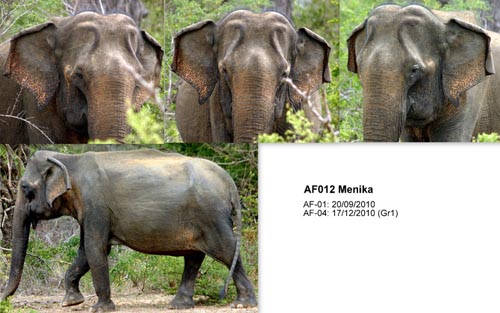
Menika
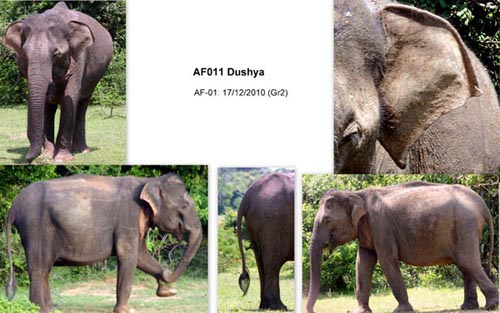
Dushya
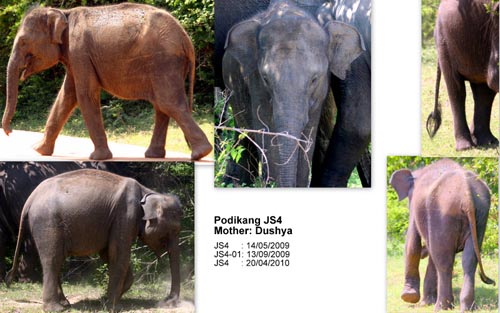
Podikang (Dushya's first baby)
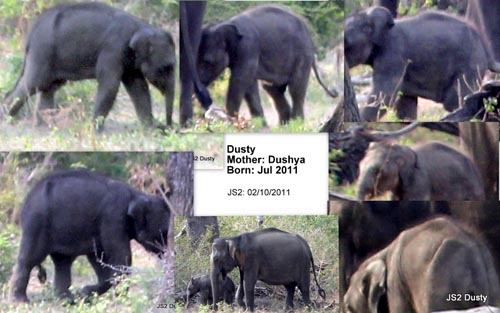
Dusty (Dushya's second baby)
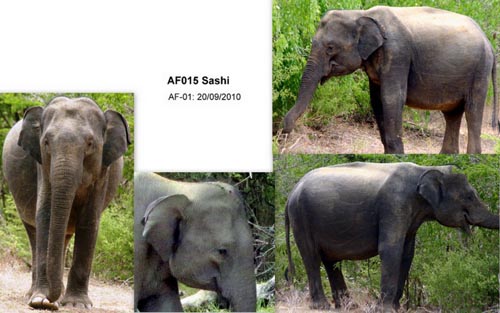
Sashi
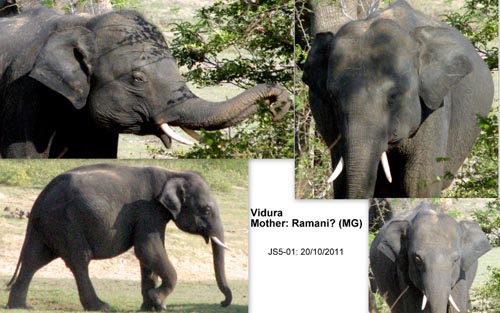
Vidura
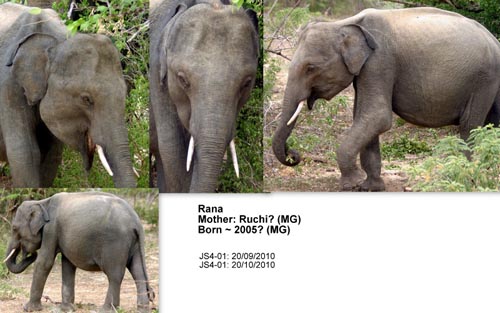
Rana